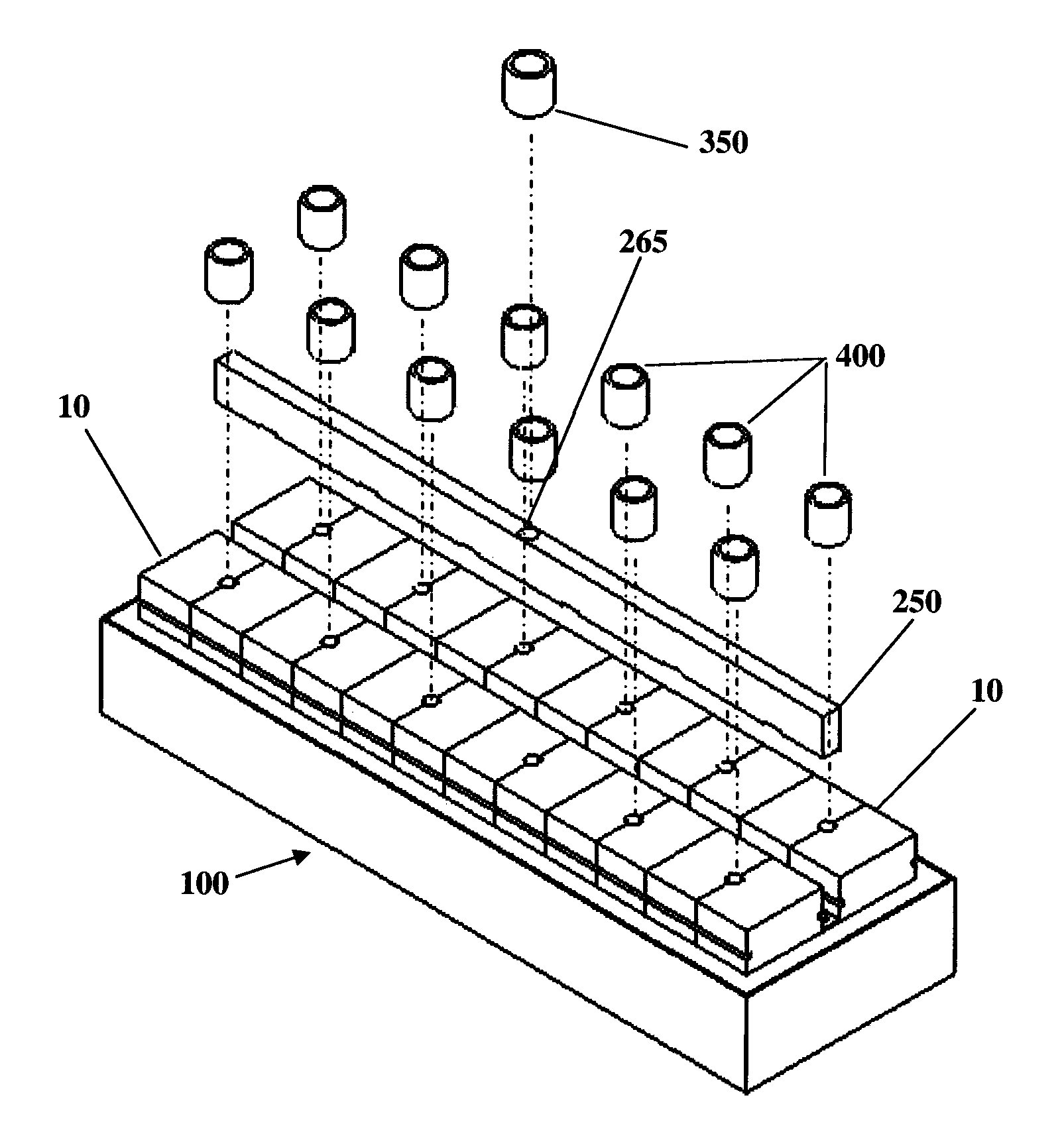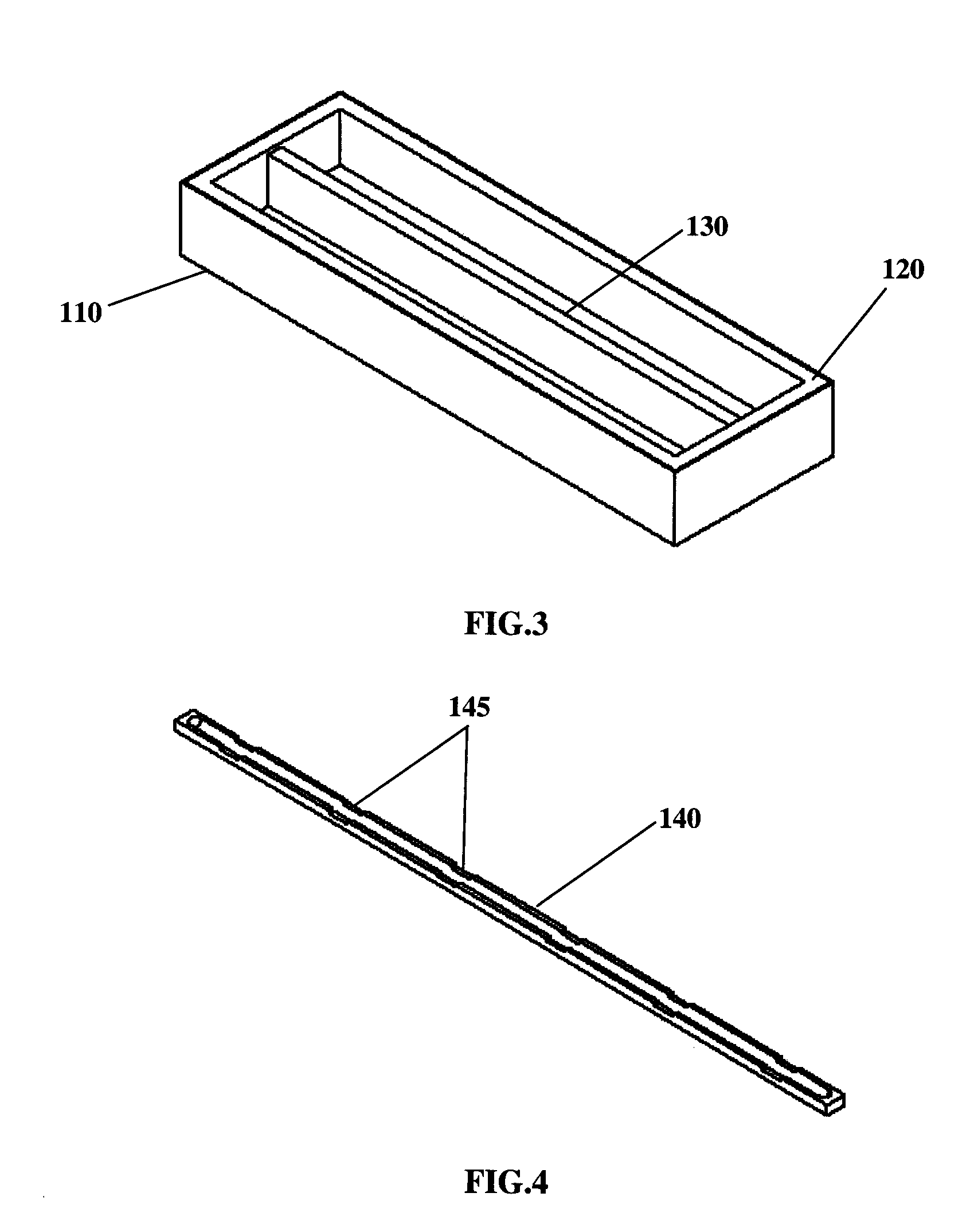Molding apparatus and method
- Summary
- Abstract
- Description
- Claims
- Application Information
AI Technical Summary
Benefits of technology
Problems solved by technology
Method used
Image
Examples
Embodiment Construction
)
[0023]The present invention is directed to casting technology. In addition, the present invention teaches a core mold assembly unit apparatus as well as a method of embodying a plurality of core mold assembly units within an external cope and external drag flask assembly to produce a plurality of independently formed parts. FIG. 1 shows an example of a core mold assembly unit 10, which comprises a core mold left half 20, a core mold right half 30, a riser vent 40, a filling gate 50, a handling groove or grooves 60, and split line 90.
[0024]FIG. 2 further illustrates an example of a core mold assembly unit 10 separated into core mold assembly unit left half 20 and core mold assembly unit right half 30 along a split line 90 to show the internal details of core assembly 70 and mold cavity 80, which in this example, represents the molding features of a railroad car connector knuckle. In one preferred embodiment, the core mold assembly unit 10 is comprised of phenolic urethane treated mo...
PUM
| Property | Measurement | Unit |
|---|---|---|
| Dimensional stability | aaaaa | aaaaa |
| Shape | aaaaa | aaaaa |
| Castability | aaaaa | aaaaa |
Abstract
Description
Claims
Application Information
 Login to View More
Login to View More - Generate Ideas
- Intellectual Property
- Life Sciences
- Materials
- Tech Scout
- Unparalleled Data Quality
- Higher Quality Content
- 60% Fewer Hallucinations
Browse by: Latest US Patents, China's latest patents, Technical Efficacy Thesaurus, Application Domain, Technology Topic, Popular Technical Reports.
© 2025 PatSnap. All rights reserved.Legal|Privacy policy|Modern Slavery Act Transparency Statement|Sitemap|About US| Contact US: help@patsnap.com



